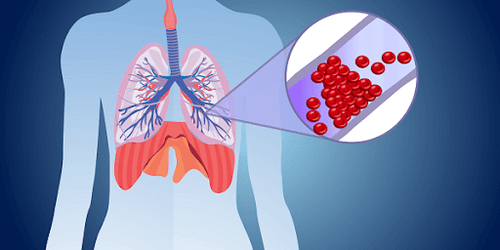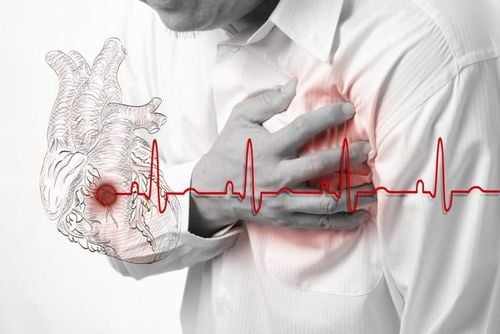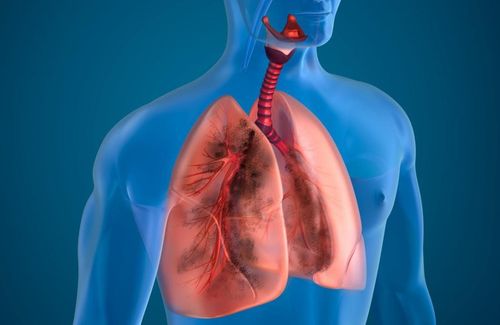This is an automatically translated article.
The article is professionally consulted by Doctor Trinh Le Hong Minh - Radiologist - Radiology Department - Vinmec Central Park International General Hospital.
Pulmonary infarction is a difficult disease to diagnose, so it is often missed or diagnosed late. Electrocardiogram is one of the basic tests to approach the diagnosis, detection or exclusion of patients with suspected pulmonary infarction.
1. What is a pulmonary infarction?
Pulmonary infarction is also known as pulmonary embolism. This is a condition in which the pulmonary artery is blocked or one of its main branches is blocked.Pulmonary infarction is a common complication for patients with cardiovascular disease. The frequency of the disease now tends to increase due to the increasing life expectancy of people. Pulmonary infarction is a very serious disease, often leading to death if not detected and treated promptly.
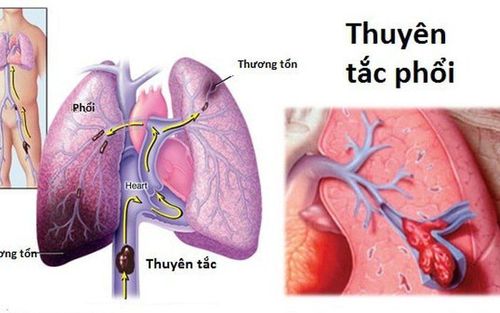
2. Causes of pulmonary infarction
The leading cause of pulmonary infarction is a blood clot that exists in a blood vessel, obstructing blood circulation, reducing gas exchange, and reducing the amount of oxygen in the body.3. Diagnostic symptoms of pulmonary infarction
Pulmonary embolism has a variety of clinical manifestations, patients may have no clinical symptoms but may also have symptoms of rapid hemodynamic failure leading to death.People with signs of pulmonary infarction include the following symptoms:
Patients often show restlessness, anxiety Chest pain, feeling of tightness in the chest Fast breathing Tachycardia Tachycardia Pale skin Sweating shortness of breath (due to pulmonary hypertension) Neck veins bulging Rash or pleural rub Low blood pressure with diastolic blood pressure <90 mmHg in severe cases Consciousness In addition, other symptoms appear present with less frequency in patients such as: coughing up blood, enlarged legs, leg pain, angina, fainting due to temporary decrease in blood flow through the heart.

4. The role of electrocardiogram in the diagnosis of pulmonary infarction
The appearance of abnormalities on electrocardiogram examination is often of great significance to assist physicians in the statistical analysis of patients with pulmonary infarction. The electrocardiogram scale was evaluated by the researchers to help diagnose patients with pulmonary infarction with the area under the curve 0.705 (95% CI 0.628-0.782).It can be said that the electrocardiogram is capable of identifying patients with low to moderate pulmonary infarction. An electrocardiogram does not rule out pulmonary infarction. When ECG changes are present, the clinical probability of pulmonary embolism increases, helping to guide diagnosis and subsequent treatment.
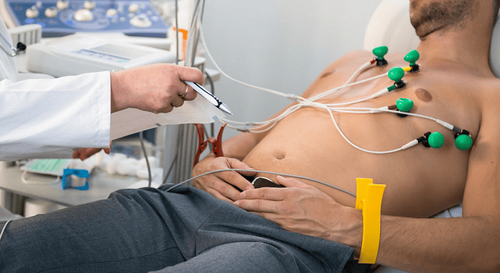
5. Methods of treating patients with pulmonary infarction
Pulmonary infarction has a high risk of death if not detected and treated promptly.Patients with pulmonary infarction are usually treated with the following methods depending on the condition, severity of the disease and the length of hospitalization:
Anticoagulation: The doctor will give the patient medication. Anticoagulation to inhibit thrombus formation, to prevent the migration of thrombus to other sites, to break up blood clots, to regulate blood coagulation. Surgery: If the blood clot is too large to be removed by medicine, doctors will have to perform surgery using a catheter to remove the clot from the body. Prophylactic treatment: The patient will have to use anticoagulants for a long time to prevent recurrence after finishing the course of treatment. Pulmonary infarction is very life-threatening. Therefore, when detecting any symptoms of chest tightness, shortness of breath and other symptoms of a pulmonary infarction, you should immediately go to a medical facility or hospital near you for help. Do not be subjective, self-treat at home because this is a dangerous, life-threatening disease and requires long-term treatment.
Vinmec International General Hospital is an international general hospital with modern equipment, a team of experienced and highly qualified medical doctors, readers can refer to and choose as an appropriate destination to visit. Trust in diagnosis and treatment.
Before taking a job at Vinmec Central Park International General Hospital, the position of Doctor of Radiology since February 2018, Doctor Trinh Le Hong Minh used to work as a resident in the Radiology Department at Vinmec Central Park. hospitals: Cho Ray, University of Medicine and Pharmacy, Oncology, People's Gia Dinh, Trung Vuong... from 2012-2015. Officially worked at Cho Ray Hospital from 2015-2016, City International Hospital from 2016-2018.
Any questions that need to be answered by a specialist doctor as well as if you need to be examined and treated at Vinmec International General Hospital, please book an appointment on the website for the best service.
Please dial HOTLINE for more information or register for an appointment HERE. Download MyVinmec app to make appointments faster and to manage your bookings easily.





